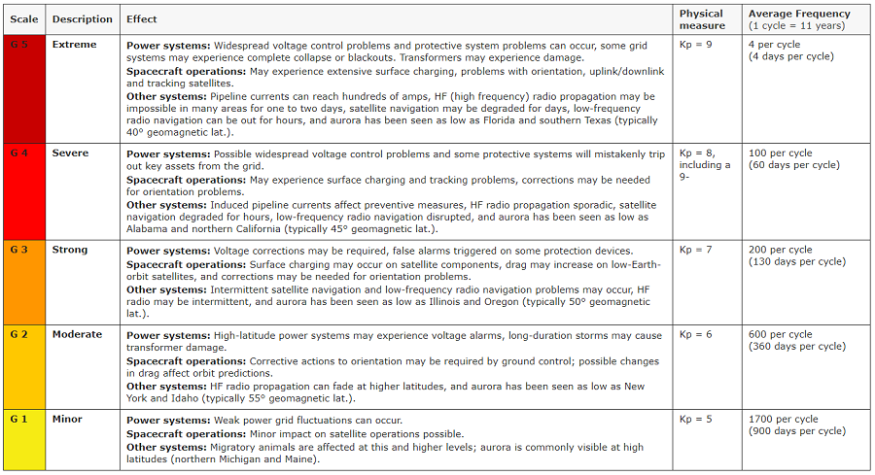A massive solar storm is expected to hit Earth today, potentially wreaking havoc on electrical infrastructures and satellites throughout the globe.
The National Oceanic and Atmospheric Administration (NOAA) has issued the geomagnetic storm notice, with a solar flare expected to impact Earth today.
Satellites may also be affected, with "orientation anomalies" requiring ground control to correct them, as well as anything in low-Earth orbit incurring higher drag, according to NOAA. According to the organization, the geomagnetic storm might reach category G2, which is moderately strong.
G2 Geomagnetic Storm

According to the organization, the geomagnetic storm might reach category G2, which is moderately strong.
"Event analysis and model output predict CME arrival about midday on October 11th, with lingering impacts lasting into October 12th," it said, with midday in the US corresponding to late afternoon and early evening in the UK.
"Aurora is possible through the 11th throughout parts of Scotland," the Met Office said, "but cloud levels are rising, making observations doubtful."
"There is a minor possibility of aurora reaching the far north of England and Northern Ireland tonight," it continued, "although cloud breaches are more likely in Northern Ireland, so sightings are more likely there."
Related Article : Expert Warns 'Situation Worse than Covid' if Government Ignores Solar Flare Defense
The Carrington Event
However, unlike the Carrington Event, which slammed Earth in 1859 and is thought to be the biggest solar storm ever recorded, scientists do not anticipate the flare to cause a considerable disturbance.
The Carrington Event produced an aurora that could be seen across the sky, even at latitudes considerably closer to the equator, and was reported as brighter than the brightness of a full moon in contemporaneous records.
It knocked out telegraph networks throughout Europe and North America, and a similar storm today might cost the world trillions of dollars.
Solar Activity

Solar activity has been recorded naturally rising and dropping every 11 years, albeit not exactly like clockwork, and astronomers believe we are now in the early years of a new active era.
Last year, a new family of sunspots identified on our star's surface released the largest solar flare witnessed by astronomers since 2017.
Solar flares are classified into several classes, with the X-class being the most powerful. The CME on Saturday was an M-class event, the second most powerful after X.
It's called a "Halo CME" because flares coming directly for Earth appear like a halo around the Sun.
CMEs
CMEs (coronal mass ejections) are massive plasma and magnetic field expulsions from the Sun's corona. They can expel billions of tons of coronal material and carry an embedded magnetic field (frozen in flux) greater than the interplanetary magnetic field (IMF) intensity in the solar wind. CMEs travel at rates ranging from less than 250 kilometers per second (km/s) to almost 3000 km/s when they leave the Sun.
CMEs aimed at Earth can reach our planet in as little as 15-18 hours. The arrival of slower CMEs might take many days. As they travel away from the Sun, they grow in size, and bigger CMEs can cover roughly a fifth of the distance between Earth and the Sun when they reach our planet.
Read also: Powerful Solar 'Superflare' That Only Occurs Once Every 10,000 Years: Can it Happen Today?
For more cosmic news, don't forget to follow Nature World News!
© 2025 NatureWorldNews.com All rights reserved. Do not reproduce without permission.





